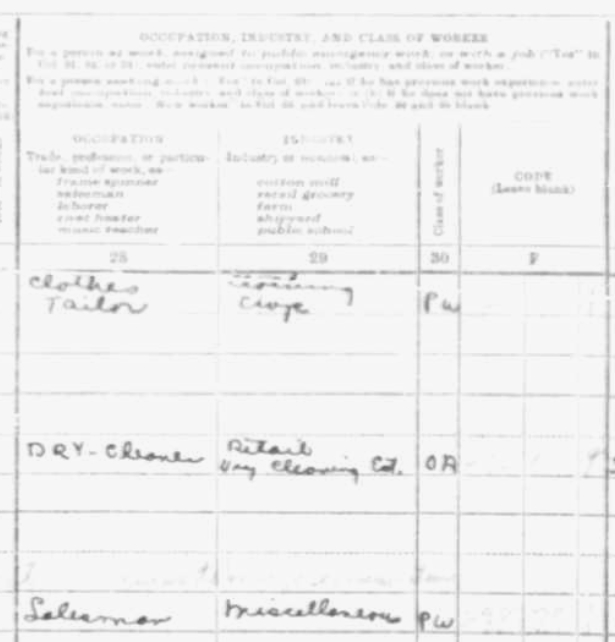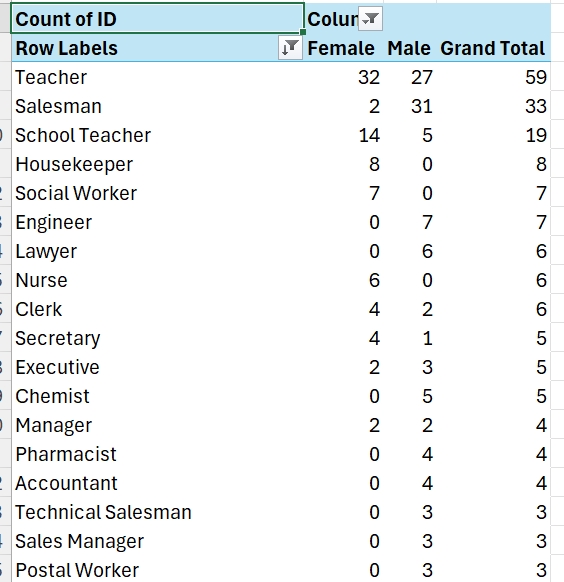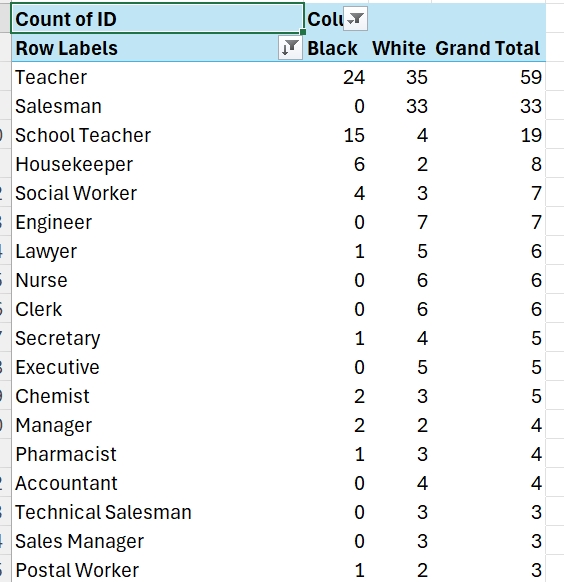To read about more Intern Projects, click here.

The 1940 census has fields for the occupation and industry for people who worked. There are also occupation and industry codes to classify this information into useable groups. However, the codes use for classification were written in pencil by coders in Washington as the entire census was being compiled. And because they were written in pencil they are harder to read than most of the other census entries. Finally, when we transcribe information from the photographed census pages into HistoryForge, it is easy to make mistakes in transcribing these codes and hard to check for mistakes. Here, for example, it is clear that the occupations are “Clothes Tailor,” “Dry Cleaner,” and “Salesman,” but the codes are impossible to read. Also, census takers would use different words for the same occupation: “Bookkeeper” and “Book keeper”; “Laundress” and “Washer Woman”; “Waiter” and “Waitress.”
But having a way to compare people having the same occupation — to see, for example, whether having more education commanded a higher wage — allow detailed insights into the lives of Walnut Hills residents in 1940.
Sam Arnold took on the daunting task of “normalizing” the huge variety of occupations we have so far in the 1940 census records. Sam was able to decrease the list of over 1300 different occupation to about 600. Then, using a statistical model, he was able to present several interesting statistics about the population.

Some statistics corresponded directly with what we would expect: Women in the same occupation tended to be paid less than men, and some occupations (e.g., nurse) were dominated by women while others (e.g., postal worker) were dominated by men. Or again, Blacks predominated in unskilled jobs like “Laborer” or “Hod Carrier.”

But there were some statistics that surprised us. Blacks commanded high wages as postal workers. Both Blacks and whites were represented as Teachers, again with relatively high wages.
Equally interesting were some unique occupations: City Deputy Sheriff, Commercial Artist, Pin Setter, Professional Billiards Player. And some individuals stood out as well: A 19-year-old Black music arranger, the Director of Public Welfare for Hamilton County, a foreign-born billiard hall operator. Sam figured out a way to identify people worthy of more investigation within the HistoryForge system by attaching “#IOI” (Individual of Interest) to a record.
Importantly, Sam’s work can be continued as we build out more census records. His classification system will easily adapt to new records entered into the 1940 census.